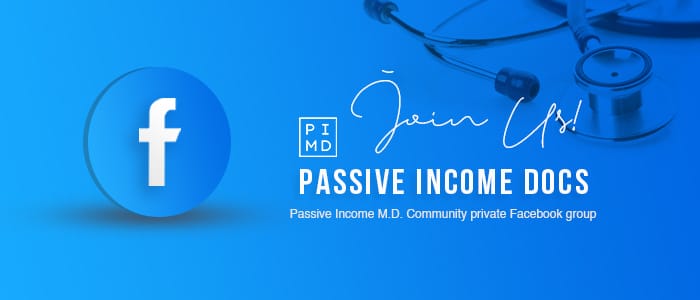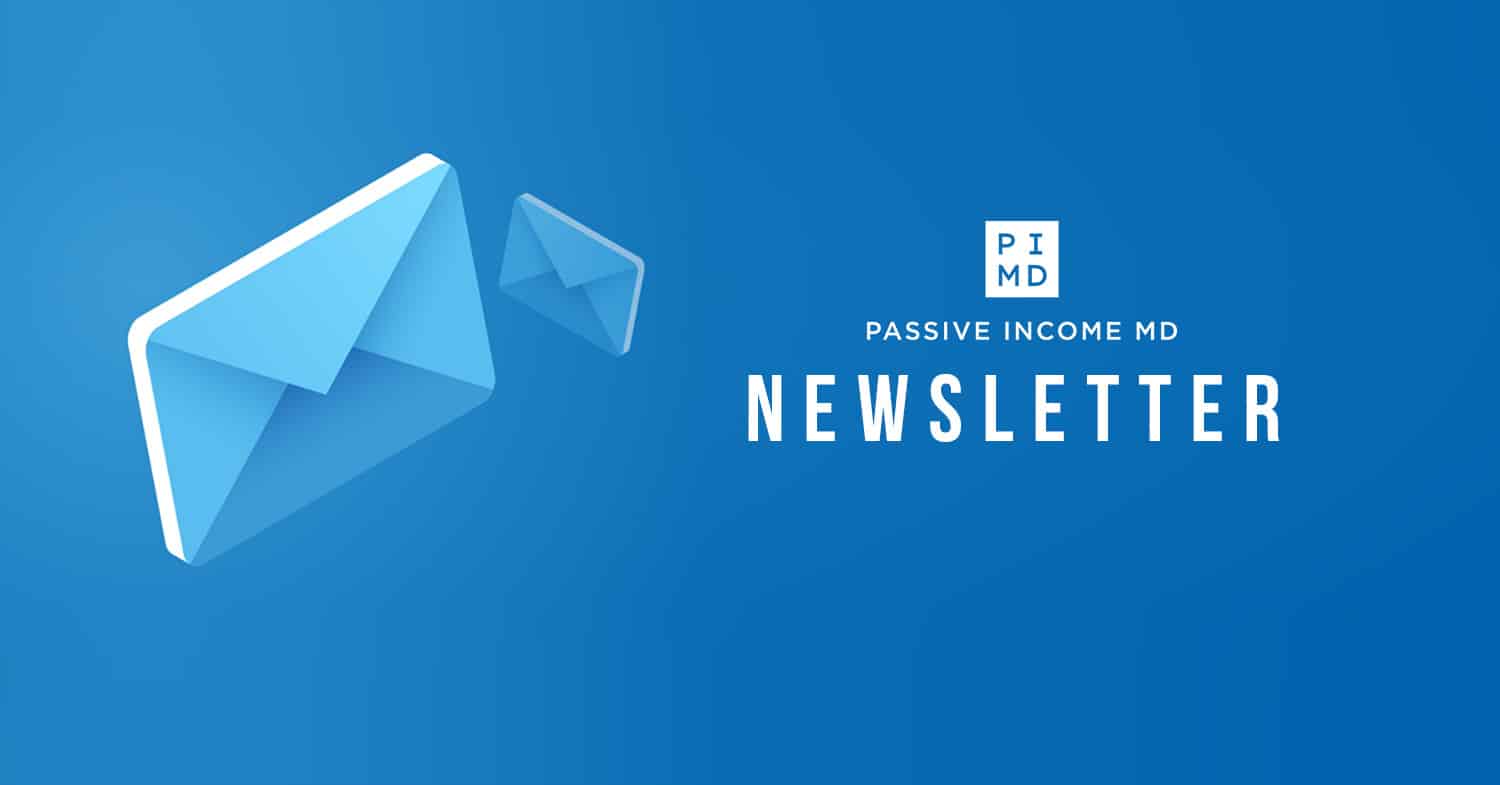
The Top Tax-Free Investments Doctors Should Consider
This post may contain links from our sponsors. We provide you with accurate, reliable information. Learn more about how we make money and select our advertising partners.
“It's not what you earn, it's what you keep.” We've all heard this saying before. Well, it's absolutely true, you can't invest or spend what never makes it to your bank account.
Turns out one of the best ways to make sure you have more in your pocket at the end of the day is to properly use the incentives built into the tax code.
I'm not an expert in taxes, but the author of this post is. Toby Mathis, the founding partner at Anderson Advisors, does a fantastic job laying out investments physicians should know about.
He will also be speaking at our first-ever conference, Financial Freedom Through Investing in Real Estate, coming up later this month.
It’s no fun to pay taxes, and few Americans pay more than physicians.
With the right investment strategies, you can significantly minimize your tax liabilities, but many professionals don’t have time to research and thoroughly understand all the benefits and advantages of each.
While you may have mitigating circumstances in your current financial picture that make some of the most popular investment strategies impractical for you, there are less well-known instruments that can be advantageous to you in a way that wouldn’t benefit your neighbors.
Let’s look at some of the top investment tools that let you keep more of the money you earn. Most of these are probably familiar to you, but I encourage you to look for the nuances in each that could benefit you.
Each of the following investments should be carefully analyzed and considered for your financial needs. You may benefit from the advice of a certified accountant or financial planner before implementing these potential investment strategies.
The key to any plan is knowing where you are starting and where you want to end up. Are you clear on your financial goals? Are you equally clear on your current position? I am always surprised at how many people, who are far more intelligent than I am, have lost track of their finances and investments.
Once you are clear on your start and end points, you can evaluate each of the following tools for how well it serves your goals
1. 401(k) / 403(b) Employer-Sponsored Retirement Plan
Employer-sponsored retirement plans offer great ways to invest for long-term periods — if you are an employee. Many physicians are self-employed, which creates a different set of circumstances.
The way your practice’s legal entity is legally configured may allow you to set up a 401(k). Pre-tax contributions are deducted from your paycheck, which lowers your adjusted gross income (AGI). Many companies will match your contributions up to a set amount and may even offer profit-sharing plans.
The earnings accrue tax-deferred and can be withdrawn after retirement when in a lower tax bracket. There are limited contribution amounts and penalties for withdrawing funds early.
You might also consider a Roth 401(k) which uses after-tax money for contributions but offers tax-free growth and tax-free withdrawals in retirement.
Although contribution limits are spread between a 401(k) and Roth 401 (k), you can contribute to both if desired. A diversified retirement portfolio will provide more withdrawal options and benefits. Employees of nonprofit companies may have access to a 403(b) retirement plan instead of a 401(k).
Both use pre-tax dollars and grow tax-deferred; however, the nonprofit employer may not offer matching contributions. Generally, a 403(b) has lower administration costs associated as well.
These employer-sponsored retirement plans are excellent ways to invest tax-free and should be one of the first methods considered, especially if price matching is available from the employer.
2. Traditional IRA / Roth IRA
An Individual Retirement Account (IRA) should also be considered for tax-conscious investors as these plans offer tax-free growth. Both traditional and Roth IRAs allow annual contributions up to $5,500 (under 50) and $6,500 (over 50).
However, income limits, retirement plans, and the structure of your entity can impact eligibility and the deductions available. High-income earners can still utilize the benefits of these options with a little more work.
Traditional IRAs allow pre-tax money to be invested tax-free and withdrawn in a lower tax rate at retirement. However, traditional IRAs also come with drawbacks such as mandatory disbursements after a certain age and other issues.
In contrast, a Roth IRA uses after-tax money and is tax-free at retirement but has income eligibility requirements. High-income earners may not be able to invest directly into a Roth IRA. This can be circumvented by first investing in a traditional IRA and then converting to a Roth IRA.
Before considering this method, there are tax implications to consider, especially if you already have an IRA. Consult with a financial advisor today if you have any questions about IRA investments.
3. Health Savings Account (HSA)
You may have encountered these as a recipient of payment for your services. Tax-conscious investors can utilize a Health Savings Account (HSA) to invest in tax-deferred and tax-free earnings on eligible spending.
In addition to decreased medical costs for upfront spending and saving for medical expenses, a health savings account offers tax benefits as well. Pre-tax contributions can be tax deductible, and interest earned is tax-deferred. Money will grow until it is used and does not expire.
When utilizing an HSA for eligible medical expenses, withdrawals can be tax-free. You can also consider additional HSA accounts for family members or a family HSA plan but beware of annual contribution limits.
Also, HSA accounts are limited to high-deductible insurance plan holders. Current healthcare spending trends seem to favor high-deductible plans. Insurance companies and employers are also keen to pass on more costs to plan holders in order to ensure responsible health care spending.
Investing in an HSA account offers many tax and healthcare spending advantages, making high-deductible healthcare plans more attractive, especially if your employer offers matching contributions.
4. Tax-Free Exchange Traded Funds
In the pursuit of tax-efficient investing, many physicians are considering exchange-traded funds (ETFs). ETFs usually have lower costs than mutual funds and offer more flexibility as well. The tax benefit depends on the types of bonds held by the ETF.
For example, U.S. government bond ETFs may be free from local and state tax but are subject to federal tax. In contrast, municipal bond ETFs are possibly free from federal, state, and local taxes.
There are many different ETFs available, and many providers or exchanges offer them. The best ETFs depend on your age, income level, retirement goals, risk, and other factors. Consult with a tax advisor to determine the best investments for your financial status and eligibility.
5. 529 Education Fund
When we work with physicians, one of the first goals they typically identify is to save for the education of their children – whether they already have children or not. Understandably, education is a high priority for many professionals. As such, 529 education plans are very popular with this group.
This allows you to set money aside for school tuition and higher education. Contributions are after-tax and not deductible, but some accumulated tax is deferred. In addition, distributions for eligible college or higher education costs may be tax-free at the federal level but only tax-free in some states.
Before starting a 529, you should consider the benefits based on your location and planned usage. Using the money on non-qualified expenses is subject to income tax, plus a penalty on earnings. Money invested into a 529 is not as liquid as other investments without facing those penalties.
However, you can change the beneficiary of a 529 plan if the intended recipient decides not to go to college. For example, you can transfer the beneficiary to yourself or to another dependent if desired.
6. Charitable Donations
This may sound odd to some ears, but charitable donations are another method of tax-free investing. When I started advising people on wealth creation and asset planning, most of my older clients set aside large portions of their estates for charitable giving as a foregone conclusion, without even discussing the tax benefits.
As time has gone on, fewer people come into my office with a plan for giving, and those who do often consider it in light of the tax benefits. How times have changed. I could make an interesting case study on the difference between how my wealthiest clients view charitable giving as opposed to those in lower wealth brackets, but that’s for a different article.
You can gift stocks to a charity in order to pass on capital gains tax. A charitable donation can also provide tax deductions when itemizing your taxes. Research this method carefully as there are restrictions, time limits, and downsides that many people miss.
However, in some situations, especially for high-income earners, it may prove beneficial. Another option is to gift money to a dependent. Uniform Gift to Minors Act (UGMA) provides tax-free and lower tax bracket options for certain investments.
It is important to note that these gift amounts have the potential to impact the child’s future financial aid eligibility. There are also complicated gift tax laws to consider. While this method may not be as tax efficient as other methods discussed, it bears further scrutiny.
Depending on how your practice is structured and the types of treatment you offer, there may be ways to get some tax advantages for your work. Do you do medical mission work overseas?
Do you offer your services for free in poor areas of your community? Spend some quality time with a tax professional who knows the federal, state, and local codes that apply to you.
7. 1031 Exchange
1031 exchanges are a form of tax-free investing which involve changing an investment without paying on the capital gains. Typically, this method is seen in real estate where one property investment is replaced by another, and gains are reinvested.The capital gains tax may be deferred to later dates as there are no limits on the number of 1031 exchanges that can be made. However, there are limitations on which investments can be exchanged.
There are also taxes due for the amount differences between investments. Since there are many complications that can arise from this method, it is highly recommended that you seek a real estate tax expert for financial advice before reinvesting.
8. Opportunity Zones
One of the most important developments in real estate investing is a little-known paragraph in the Tax Cuts and Jobs Act (TCJA) of 2017. It is an initiative to improve low-income and distressed communities all over the country.
To incentivize business owners and real estate investors to do this, the government is offering a significant tax benefit — simply put, a reduction and a delay in taxes owed from the capital gains on the sale of a major asset. While the tax benefits and potential cash flow are great for investors like you, Opportunity Zones have a positive social impact, too.
Plagued by vacant buildings, distressed homes, and run-down empty lots, the local communities where you invest will benefit from job creation, the beautification of these areas, and more options for affordable housing… that you help to produce.
Now, there are some important considerations regarding how to keep your real estate holdings legally isolated from your practice. It would be tempting to use your practice as a form of leverage on which to build your real estate empire.
Don’t.
You will create a legal and financial nightmare. There are right ways to do this that will maximize your returns and minimize your tax exposure. This is advanced-level real investing; we don’t even talk seriously about it with our clients until we can see that they are ready.
Know Your Investment Personality
Some of these investment tools are designed to move fast and get explosive results, while others are designed to be slow and steady over time. The more aggressive you are, the greater the risks you take, but the higher the potential reward, as well. You need to know your tolerance for risk before you embark on any plan.
It’s also important to sit down with an expert who can help you talk objectively about your goals and your options. You wouldn’t direct your patients to self-diagnose, even if they are highly educated.
In the same way, your expertise in your field isn’t necessarily an advantage when it comes to wealth development, asset protection, and tax minimization. Even here at Anderson, we generally don’t trust ourselves to be perfectly objective when it comes to our own money. We seek out each others’ wisdom and benefit from each others’ strengths, much like you do with your colleagues.
For PIMD readers, we've set up a way to get a free consultation with Anderson tailored for physicians. They'll take an objective look at what it will take to build the financial life you’re dreaming of.
Join our community at Passive Income Docs Facebook Group. Just click below…

Disclaimer: The topic presented in this article is provided as general information and for educational purposes. It is not a substitute for professional advice. Accordingly, before taking action, consult with your team of professionals.

